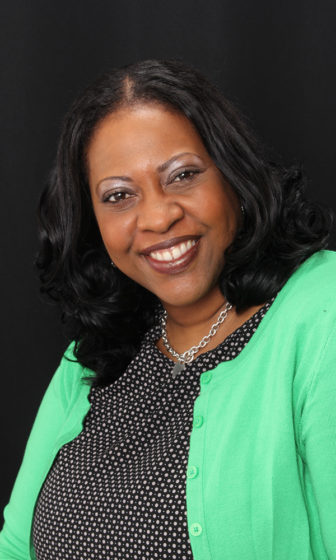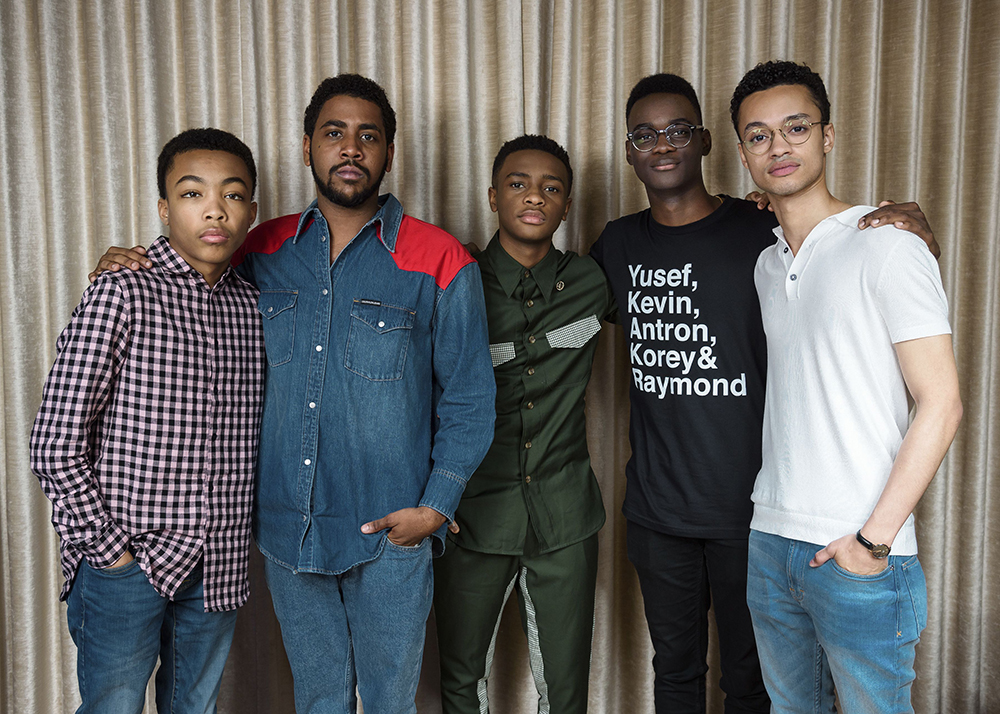Netflix’s highly anticipated limited series, Ava DuVernay's "When They See Us" is now out. It chronicles the story of the infamous Central Park Five case: how five teenage boys of color from Harlem were wrongly convicted of the rape of a white woman in 1989 and their 25-year fight for justice.
The Campaign for Youth Justice had the opportunity to participate in an advance screening of the film in New York, along with other social and criminal justice advocacy organizations.
For more information on Racial-Ethnic Fairness, go to JJIE Resource Hub | Racial-Ethnic Fairness
What became abundantly clear from the viewing and our post-film conversation was that this story continues to get attention and still needs to be told because this unfortunate circumstance could very well happen again today. Not much has changed from high racial tensions and an overreach and misuse of authority by the New York District Attorney's Office, to a frenzied media that helped fuel bias and stereotyping in their coverage, and a fractured criminal justice system that did not want to treat kids like kids.

Aprill O. Turner
Director and co-writer DuVernay masterfully tells the stories of Raymond Santana, Kevin Richardson, Antron McCray, Yusef Salaam and Korey Wise (formerly Kharey) who were all between the ages of 14 and 16 at the time of their arrest. This isn’t the first time the high-profile case has been turned into a film. In 2012, director Ken Burns made the documentary “The Central Park Five." What sets DuVernay's project apart is how she was able to offer a rare lens into the lives of these young men, their families and the devastation that takes place in a community when a bad actor prosecutor and the police department can manipulate a system and abuse authority to steal the lives of five young men.
Problems with race, class, policing of black communities and the weaponizing of racial fears all still ring true.
In 2016, the case made headlines again when President Donald Trump, then the Republican presidential nominee, insisted the men were guilty despite the DNA evidence that had freed them. In 1989, less than a month after the attack, Trump made himself a figure in the case when he took out full-page ads in the New York Daily News and other newspapers urging the city to “bring back the death penalty.”
All five teens spent years in prison before another man admitted to the crime in 2002, overturning their convictions. His DNA matched a sample taken from the crime scene.
Prosecutor, media bias
DuVernay does a great job of highlighting two major components that fueled this case forward more than anything else — the roles of prosecutors and the media.
Police and prosecutors arrest and sentence youth of color at higher rates than white youth, despite reform efforts to stop this practice. Since prosecutors are gatekeepers to the criminal justice system, they have incredible power and discretion to shape the course of young people's lives who come into contact with the criminal justice system. They have the power to pack jails and prisons and deepen racial disparities.
Linda Fairstein, played by Felicity Huffman in the series, was chief of the Sex Crimes unit for the Manhattan District Attorney’s Office and oversaw the prosecution of the five teens. Like Trump, Fairstein has maintained over the years that the Central Park Five are not innocent. Last year, she publicly still defended the prosecution’s methods in obtaining the teens’ confessions, which she said were not coerced.
Lead prosecutor of the case, Elizabeth Lederer, played by Vera Farmiga in the film, continues to work as a prosecutor in the Manhattan District Attorney’s Office to this day. The gross mishandling of this case should call into question every other case she investigated and prosecuted during her entire career.
Since almost all prosecutors are elected officials, the film serves as powerful reminder that we actually do have a say. We are at a pivotal time when we have the opportunity to use the power of our votes to right some of the societal ills we are witnessing. Local law enforcement is demonstrating it is time for a shift.
Solutions
We have the opportunity to create change in our local municipalities by looking down the ballot. The "smaller" races matter just as much as the big races do. Three out of four people in local courtrooms — the local district attorneys, sheriffs and judges — are elected. The 2019 and 2020 elections present a great opportunity to help change the narrative about our young people who come in contact with the law.
Then there is the media. Research by The Opportunity Agenda, reviewing hundreds of studies over several years, found that news coverage and other media depictions overrepresent black boys and men in stories of violence, crime and poverty; underreport important dimensions of black males’ lives, such as fatherhood and work; and lack coverage of systemic barriers facing members of this group. This dynamic was in play in this case.
The majority of mainstream newsrooms continue to not look like and reflect the communities that they serve. They also lack diversity at the most senior levels to help shape what it takes to represent underrepresented communities in news coverage.
According to Natalie Byfield, a former New York Daily News reporter and associate professor of sociology at St. John’s University who covered this case in 1989, the media did not do its due diligence with regard to this case. “The media fell down on its job. I put together a sample of 251 articles representative of the coverage. Twelve articles, not 12%, 12 articles in that sample used the term alleged.”
The Opportunity Agenda has assembled a wonderful guide, "When They See Us: Improving the Media’s Coverage of Black Men and Boys," intended to help journalists and media organizations produce fuller and more accurate reporting on African-American boys and men while reducing bias and stereotyping in their coverage. Their recommendations include that media strive to: acknowledge and review content for bias; look at the big picture; foster diversity; cover obstacles as well as outcomes; capture the missing stories, and be responsive and accountable.
We have a say and a voice and should take the time to hold our local media outlets accountable when we see coverage that is not fair and balanced.
This is a great film and is a highly recommended must-see on an issue that does not get the proper attention that it deserves.
To learn more about how we can fight these types of injustices, I invite you to check out our A.C.T. to End Racism Campaign, which launched this year. It seeks a system that treats all children in developmentally appropriate ways, that is responsive to any trauma they may have experienced and that keeps youth in their homes and communities whenever possible by transforming the ways our justice system treats youth of color.
Aprill O. Turner is communications director of the Campaign for Youth Justice, a national initiative focused entirely on ending the practice of prosecuting, sentencing and incarcerating youth under 18 in the adult criminal justice system.
